Franklin's Gull
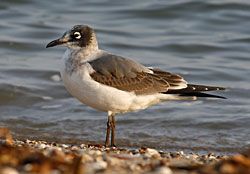
© David McDonald
Leucophaeus pipixcan
Family: (Laridae) Gulls, Terns and Allies
Preferred Habitat: Coastal, rivers, and lakes.
Seasonal Occurrence: Uncommon spring and fall

© Greg Lavaty
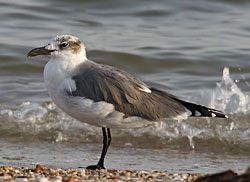
© David McDonald
Profile by Rachel Myers: The Franklin’s Gull is a small gull species that migrates through our region of the upper Texas coast. Breeding Franklin’s Gulls have a black head, red bill, and white eye crescents. Franklin’s Gulls also often show a rosy cast on their chest and abdomen. This color fades as the breeding season progresses and sunlight breaks down the pigment. They look similar to Laughing Gulls, and it can be difficult to distinguish the two species. Laughing Gulls are larger than Franklin’s Gulls, with a longer and larger bill. Franklin’s Gulls have large white spots on the tips of their primaries (wing feathers), where Laughing Gulls have significantly smaller and fewer spots on their primaries or lack these spots entirely. In non-breeding adults, Franklin’s Gulls have more extensive black coloration on the head and more prominent eye crescents than non-breeding Laughing Gulls.
Courting Male Franklin’s Gulls give a unique call compared to other gull species. It consists of up to 8 long, high-pitched keeeah calls and begins and ends with a short kah sound. Franklin’s Gulls nest in freshwater marshes with abundant vegetation and patches of open water in the prairies of the Northern Great Plains and central Canada. In their nesting habitat, they form colonies of hundreds or thousands of birds, often nesting close to one another. After nesting, Franklin’s Gulls move South throughout the intermountain West and Great Plains. They often seek out agricultural areas, pastures, and a variety of wetlands, including lakes, lagoons, estuaries, and bays. Franklin’s Gulls have one of the longest migrations of any gull species as they winter along the West coast of South America as far South as southern Chile. During the breeding season, Franklin’s Gulls eat mostly invertebrates and small amounts of vegetation such as oats and wheat. Wintering Franklin’s Gulls eat insects and other invertebrates, along with small fish and crustaceans along shorelines.
Male Franklin’s Gulls select display and nest sites in floating vegetation in shallow water, near emergent vegetation. Both the male and the female build the nest, a floating platform of wet vegetation. Adults maintain the nest and add new material as it decays and sinks. Clutch size is from two to four eggs. Chicks are semi-developed at hatching, covered in down, and can stand within a day, but usually stay in the nest for three weeks. Both parents defend the nest area and feed the chicks.
Franklin’s Gulls are found in our region of the Texas coast as they are migrating in the spring and fall. Franklin’s Gulls are highly social during migration, and often associate with other gull species, terns, and shorebirds. Good places to look for this species include Bolivar Flats, East Beach (Galveston), and Anahuac NWR. Try your luck, bring a spotting scope of you have one, and see if you can find one among the mixed flocks.
Notes: Franklin's Gull is never very common in our area, although occasionally large flocks of Franklin's Gulls are seen in migration. It breeds in northern prairies and winters on the west coast of South America. In breeding plumage it looks quite similar to the Laughing Gull, but is smaller and has a proportionately smaller bill. In the nineteenth century it was first named "Franklin's Rosy Gull" for its slightly rose-colored breast and belly. The amount of pink color is highly variable and often absent. It was nicknamed "Prairie Dove" in the nineteenth century.
-
Cornell Lab of Ornithology
-
Field Guide
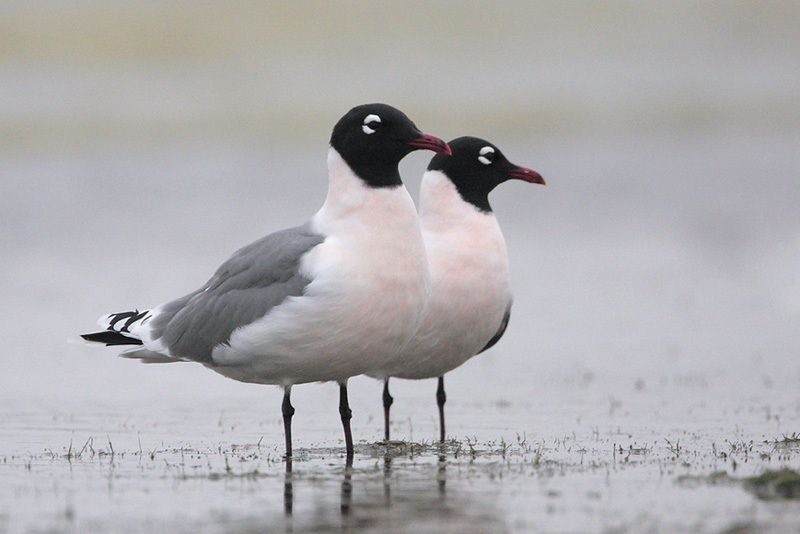
© Greg Lavaty, www.texastargetbirds.com
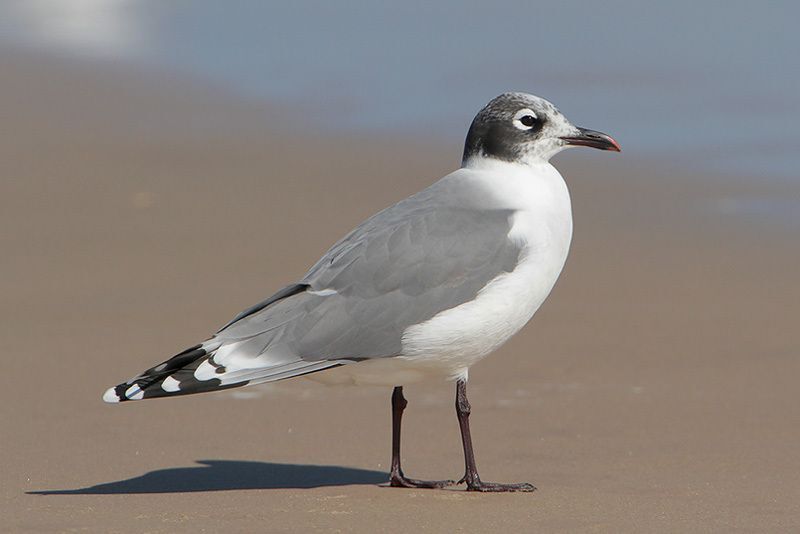
© Greg Lavaty, www.texastargetbirds.com

© Greg Lavaty, www.texastargetbirds.com
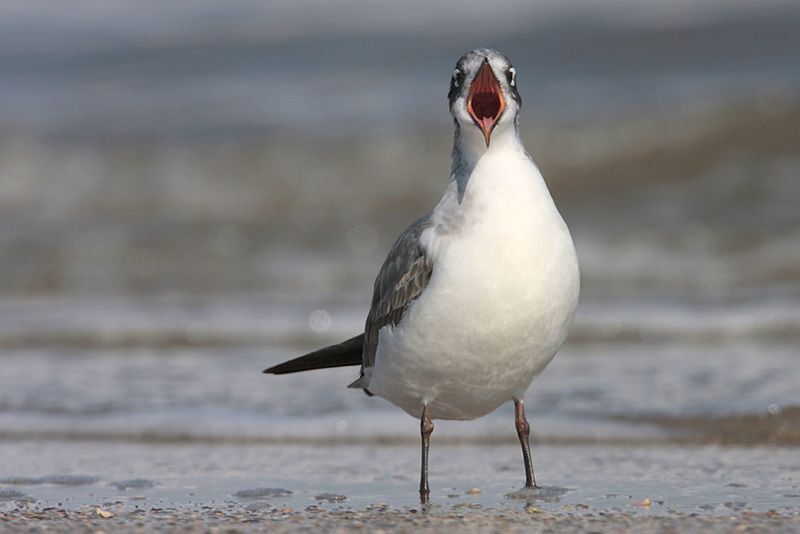
© Greg Lavaty, www.texastargetbirds.com




















